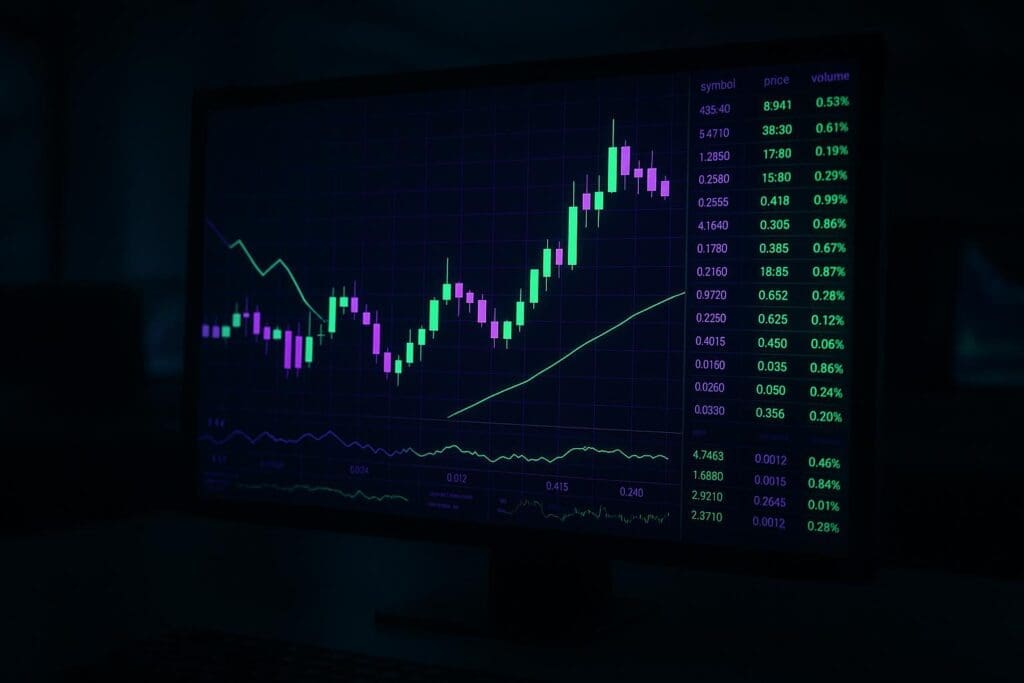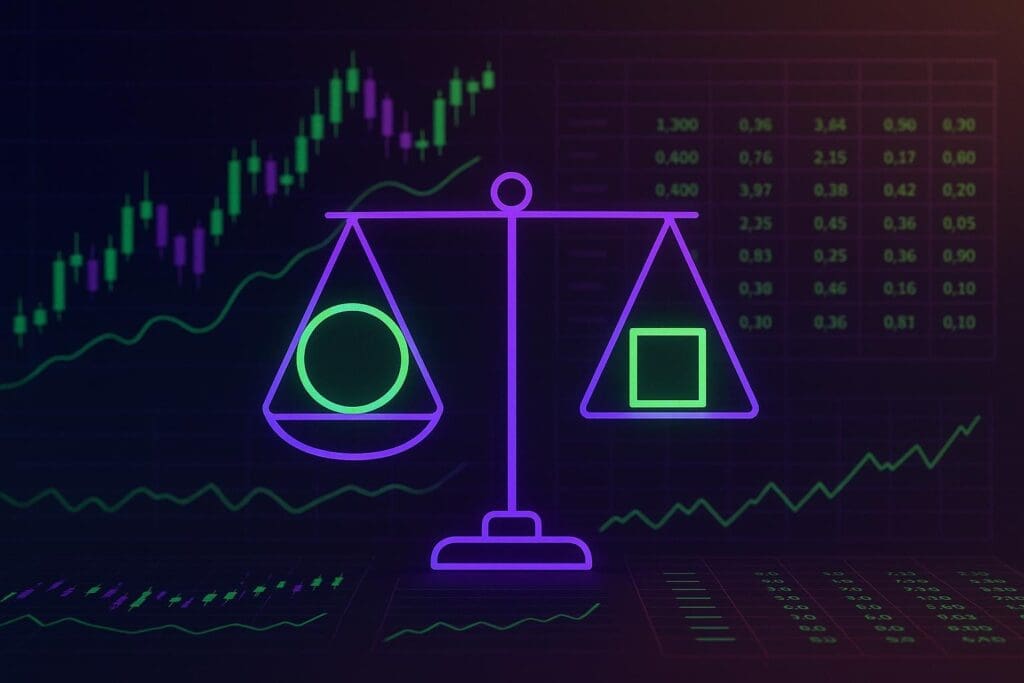Prop firms limit trading during news events to manage risks like extreme volatility, slippage, and price gaps. These restrictions, often called blackout periods, typically last 2–4 minutes before and after major economic announcements like NFP, CPI, or FOMC decisions. The goal is to protect both traders and firms from unpredictable losses while encouraging disciplined trading.
Key points:
- Volatility risks: News events can cause sharp price swings, leading to slippage and account blowouts.
- Blackout periods: Most firms block trading 2–4 minutes around high-impact events.
- Firm-specific rules: Some firms cap profits, others disqualify gains, or enforce strict compliance via automated systems.
- Account types: Rules often differ between evaluation and funded accounts.
For traders, understanding these rules is crucial to selecting a firm that aligns with their strategy and risk tolerance. Platforms like DamnPropFirms offer detailed comparisons of firm policies.
PROP FIRMS RULE CHANGE – No news trading
How Prop Firms Restrict News Event Trading
Futures prop firms have specific strategies to manage trading around major economic announcements. They often use "blackout windows" that last anywhere from 2 to 15 minutes, aiming to minimize impulsive trades during periods of high volatility. Here’s a closer look at how these firms classify events, enforce rules, and implement additional measures to maintain a controlled trading environment.
Tier 1 Event Classification
Prop firms categorize economic announcements based on their potential market impact. To identify events that require restrictions, they often rely on trusted economic calendars like Forex Factory’s "red folder" events. These high-impact announcements include U.S. Non-Farm Payrolls, CPI data, FOMC rate decisions, and GDP reports. Such events are known to create sharp market movements, significantly influencing trading outcomes.
Enforcement Mechanisms
Firms use various enforcement tools to ensure traders comply with these restrictions. Automated systems frequently block order entries during blackout periods. In some cases, trades are allowed, but any profits made during the restricted time are later removed. For instance, Blue Guardian adjusts profits earned within 2.5 minutes before and after a high-impact event on funded accounts.
Account-Specific Rules
While some firms allow news trading during the evaluation phase, they often impose stricter rules on funded accounts. These restrictions might include profit caps during news events, limiting gains to a set percentage of daily profits or tying them to the account balance.
Risk Management Rationale
The primary reason for these restrictions is risk management. High-impact events often lead to extreme volatility, slippage, and price gaps, which can pose significant challenges. These measures ensure that traders operate in a sustainable manner and prevent them from exploiting simulated environments. This approach helps align trading behavior with real-world market conditions .
Technology Limitations
During major news events, the surge in order flow can overwhelm trading platforms. This can lead to delayed order fills, increased slippage, or even system outages. Automated restrictions or profit adjustments during these times help maintain platform stability and ensure consistent execution quality.
Regulatory Compliance Considerations
Although not the primary focus, regulatory compliance also plays a role in shaping news trading restrictions. By curbing potentially manipulative practices during volatile periods, prop firms can align with regulatory standards and reduce scrutiny from oversight bodies.
These measures form the backbone of the trading rules implemented by firms like Apex Trader Funding and Take Profit Trader, setting the stage for the next discussion on their specific approaches.
1. Apex Trader Funding

Apex Trader Funding takes a structured approach to trading, blending opportunities with risk management. One key policy is a 2-minute blackout period before and after major economic announcements, which applies across all account types. Here’s a closer look at how their system works, focusing on account types, profit limits, and enforcement measures.
Account Types
The blackout and other trading restrictions apply uniformly to both evaluation and funded accounts, maintaining consistency across the board.
Profit Limits
To encourage balanced trading strategies, Apex Trader Funding caps daily profits from news-related trades at 30%. This means that no more than 30% of a trader’s daily earnings can come from trades made around major economic announcements. For instance, if a trader earns $1,000 in a day, only $300 of that can be attributed to news-related trades. This policy pushes traders to diversify their strategies rather than relying solely on the volatility of news-driven events.
Enforcement
Automated systems are in place to monitor compliance with these rules. Trades made during the blackout period are flagged, and traders are prevented from holding opposing positions simultaneously. Violations, such as exceeding the 30% profit cap or breaking blackout rules, can lead to profit adjustments or account penalties.
This framework allows traders to leverage market opportunities while keeping risks in check. Tools like DamnPropFirms’ Consistency Rule Calculator can help traders track their performance and ensure they stay within the guidelines.
2. Take Profit Trader
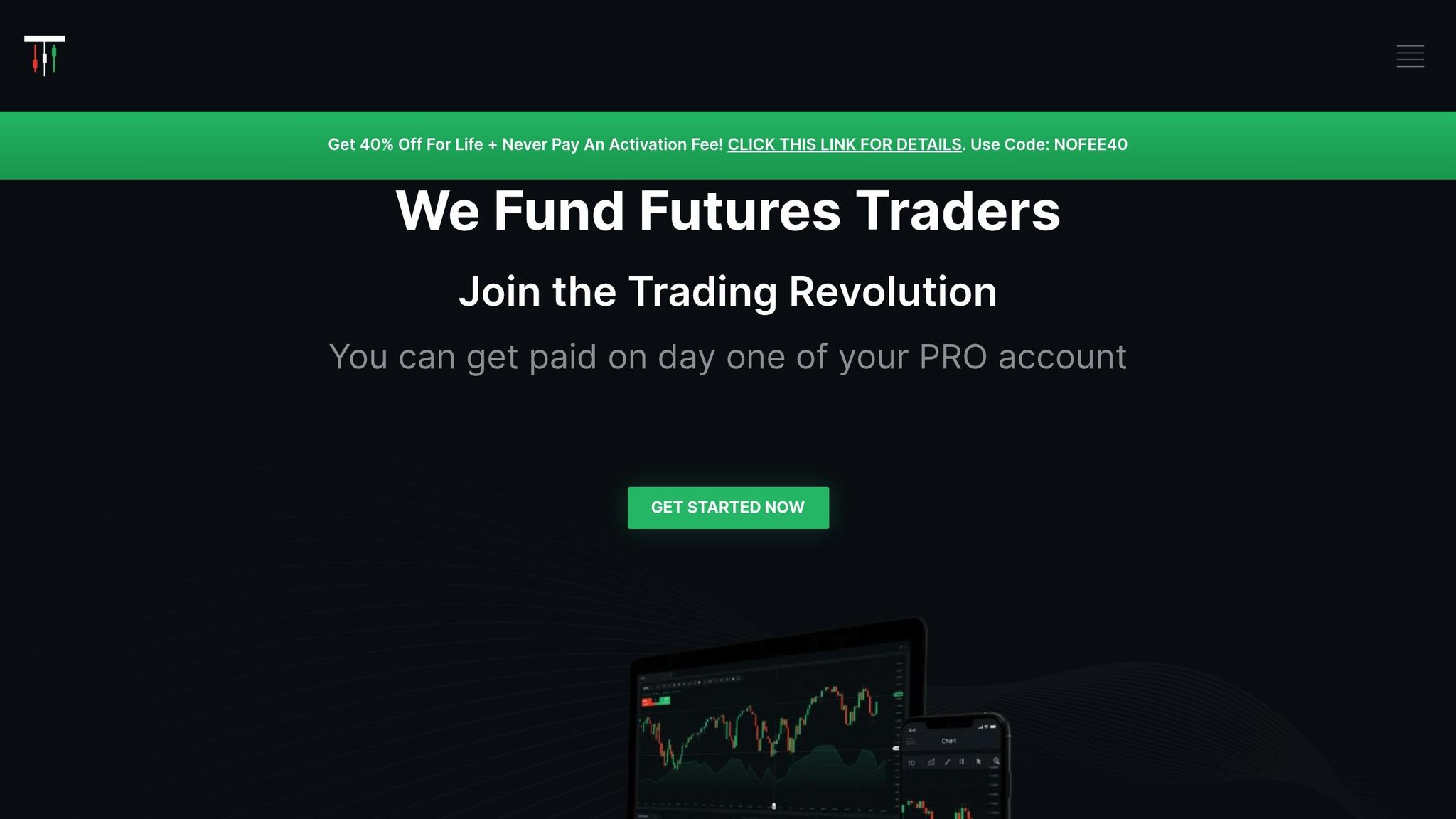
Take Profit Trader takes a two-phase approach to news event trading, separating the rules for evaluation accounts and funded accounts. During the evaluation phase, traders are free to experiment with news trading strategies, even in high-volatility conditions. However, once the account becomes funded, strict rules regarding news events come into play.
Blackout Windows
For funded PRO and PRO+ accounts, Take Profit Trader enforces a one-minute blackout window before, during, and after major news events. This is shorter than the industry norm, which often applies a two-minute buffer on either side of these events. The blackout applies to high-impact economic releases like FOMC statements, Non-Farm Payroll (NFP) reports, and Consumer Price Index (CPI) announcements. Additionally, there are instrument-specific restrictions – for instance, crude oil trading is restricted during EIA inventory reports, and Treasury bond futures are limited during auction periods.
Account Types and Transition
Once traders move to funded accounts, they must adhere to these blackout rules. This phased system allows traders to explore and refine their strategies during the evaluation phase, but it also prepares them for the stricter guidelines that come with live trading. The transition encourages adaptability and discipline, which are essential for long-term success.
Enforcement Mechanisms
To ensure compliance, Take Profit Trader employs automated systems that monitor trades in real time. Any trade executed during the blackout window results in immediate account termination. Traders must close all positions and cancel pending orders at least one minute before a news event begins to avoid penalties.
Managing Profit and Risk
Rather than modifying profits earned during news events, Take Profit Trader eliminates the risk altogether by requiring all positions to be closed and orders canceled during blackout periods. This approach is especially important during moments of extreme volatility, like an NFP release, where a protective stop can slip significantly – sometimes from five ticks to as many as 15–20 ticks. By removing the possibility of trading during these intervals, the firm minimizes risk exposure for both traders and the firm itself.
For traders using DamnPropFirms’ resources, comparing these restrictions to other firms’ policies can help determine which setup best suits their trading style and risk appetite.
3. FundedNext Futures
FundedNext Futures takes a slightly different approach compared to other platforms when it comes to handling news trading. Instead of outright banning trading during high-impact news events, they allow participation but implement a profit limitation system. This setup aims to balance trading opportunities with measures to curb excessive reliance on market volatility.
Profit Limitations and Account Types
At FundedNext Futures, there’s a 40% profit retention rule for trades made within five minutes of a high-impact news event. For example, if a trade earns $1,000 in profits during this window, only $400 is credited to the trader’s account. This rule ensures traders can engage with market-moving events but discourages strategies that hinge solely on extreme price swings.
What’s notable is that this profit limitation applies across all account types, whether it’s an evaluation account or a funded account. Unlike firms that have different rules for different account tiers, FundedNext Futures keeps things straightforward and consistent for all traders.
Enforcement Mechanisms
To ensure compliance, FundedNext Futures uses automated systems to monitor trading activity. These systems cross-check trade timestamps with economic calendars to identify high-impact events. If a trade is executed within the five-minute restricted window, the profit limitation is automatically applied. This transparent process allows traders to plan their strategies while understanding the boundaries.
For a deeper dive into comparisons with other platforms, visit DamnPropFirms.
4. Alpha Futures
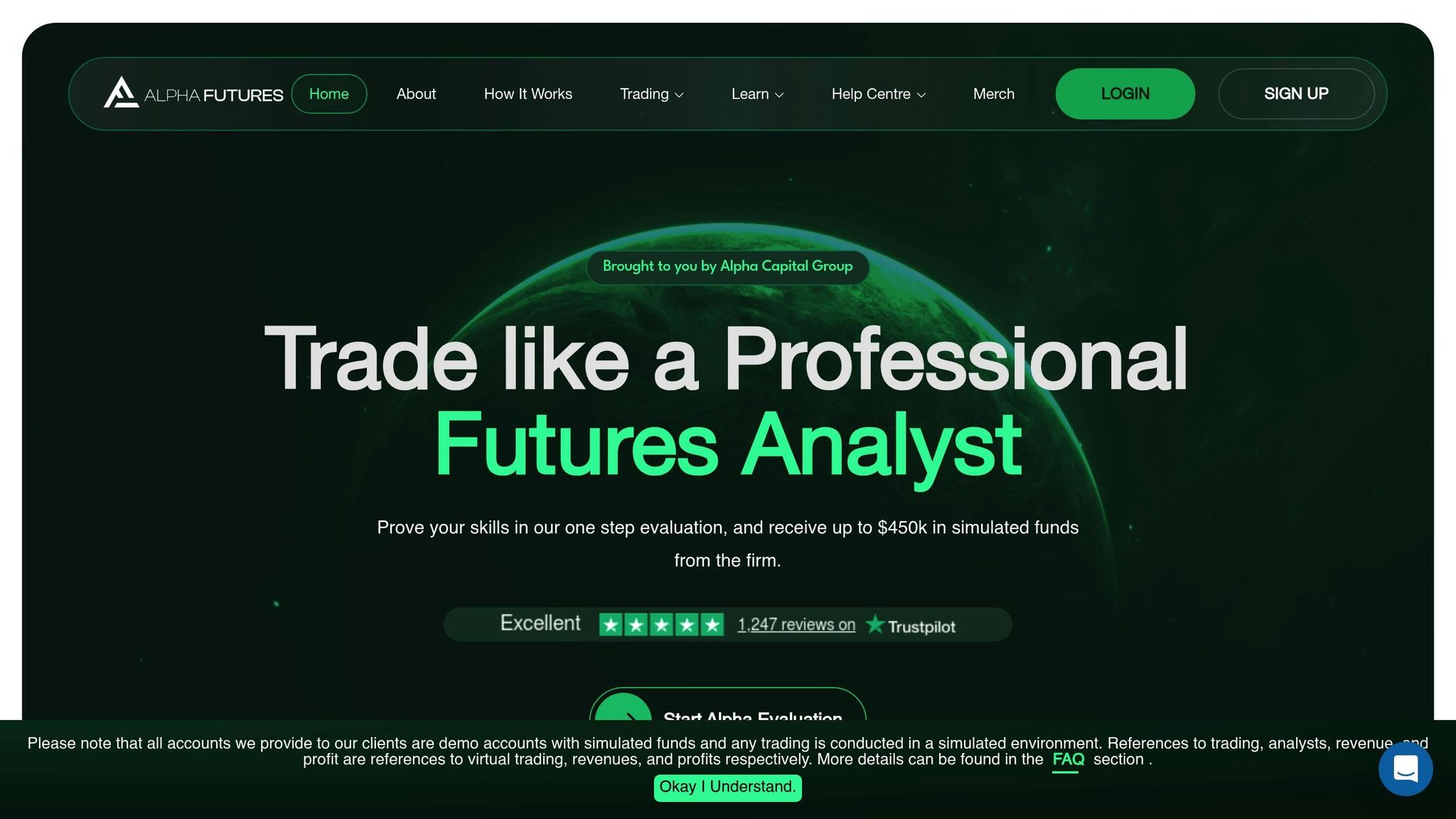
Alpha Futures takes a structured approach to news event trading, similar to FundedNext Futures, by implementing clear rules to manage risks during major economic announcements. Their goal is to minimize the impact of market volatility and any technical disruptions during these critical moments. You can learn more about their policies here.
Blackout Windows
To handle the heightened risk associated with major economic events, Alpha Futures imposes a strict four-minute blackout period – two minutes before and two minutes after Tier 1 events. These include major announcements like U.S. Non-Farm Payrolls, CPI data, and FOMC decisions. These events are notorious for causing significant market swings, making the blackout periods essential for maintaining stability.
Allowed Account Types
The level of restriction during news events depends on the type of account a trader holds. Evaluation accounts are given more leeway, allowing traders to test strategies with fewer constraints. However, funded accounts must adhere strictly to the blackout rules, reflecting the higher stakes involved.
Enforcement Mechanisms
Alpha Futures employs automated systems to ensure compliance with its news trading policies. These systems compare trade timestamps against economic calendars in real-time, flagging any violations immediately. If a trader breaches the rules, consequences are swift and severe, including potential account termination or loss of funding.
Profit Limitations
Profits made from trades that violate the blackout rules are automatically stripped from the trader’s account balance. For instance, if a trader enters a position on E-mini S&P 500 futures one minute before an FOMC announcement and exits it two minutes afterward, any gains from that trade are forfeited. However, profits are preserved if the trade is initiated well before the event and closed after the blackout period ends. This ensures that traders operate within the established guidelines while still allowing room for strategic planning.
5. Tradeify
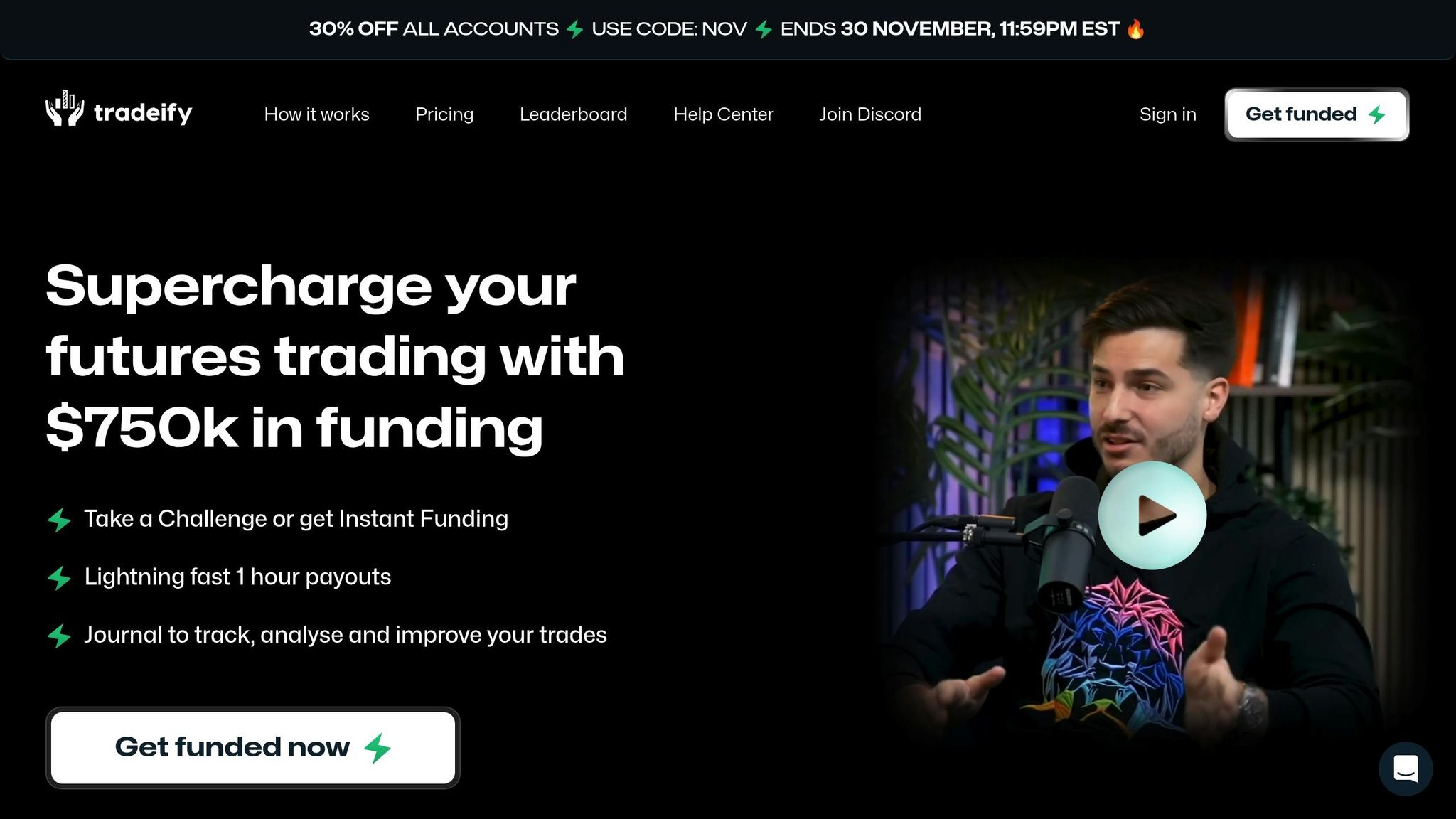
Tradeify takes a cautious approach to news event trading, adhering to industry norms designed to shield both traders and the firm from the intense market swings triggered by major economic announcements. While they don’t share every detail of their restrictions, their policies reflect standard practices commonly seen in the futures prop trading world. This approach highlights Tradeify’s focus on maintaining disciplined risk management. For more details about their offerings and policies, visit here.
Blackout Windows
Tradeify enforces a four-minute blackout window around key economic announcements, though the exact timing remains undisclosed. These restrictions are aimed at highly volatile events such as Non-Farm Payrolls (NFP), Federal Open Market Committee (FOMC) decisions, and Consumer Price Index (CPI) releases, which are known for creating extreme market fluctuations.
During these high-risk periods, stop-loss orders can slip by as much as 15–20 ticks on E-mini S&P 500 (ES) futures, compared to the usual 5 ticks. This significant increase in slippage risk makes blackout windows a necessary safeguard to help maintain account stability and avoid unexpected losses.
Allowed Account Types
Tradeify tailors its policies based on account type, a practice common among many prop trading firms. Some firms restrict news trading only during the evaluation phase, while others apply these rules across all account types, including funded accounts. It’s important for traders to confirm whether Tradeify applies different rules depending on whether an account is in the evaluation stage or fully funded.
Understanding these distinctions is crucial, as they directly influence trading strategies and timing decisions. Make sure to verify how these restrictions apply to your specific account type.
Enforcement Mechanisms
Like many top firms, Tradeify enforces its rules with automated monitoring systems, taking a strict stance on violations. Their system uses real-time timestamp monitoring to compare trade activity against economic calendars, flagging any trades executed during restricted periods.
Enforcement measures include platform-level order blocking, which prevents trades from being placed during blackout windows, and post-trade audits to catch any violations that might slip through. If a violation is detected, the consequences are immediate and severe – often resulting in account termination without prior warning.
Profit Limitations
While Tradeify hasn’t fully disclosed its policies on profit limitations, many firms in the industry impose restrictions on profits earned during news events. Some firms go as far as voiding profits made during blackout windows, while others cap the amount a trader can keep.
For example, if a trader opens and closes a position during a blackout window – such as around a CPI release – any profits from that trade are typically disqualified. However, profits from positions opened well before the event and closed after the blackout window are usually valid. This underscores the importance of precise trade timing to ensure compliance with the rules and retain earned profits.
sbb-itb-46ae61d
6. FundingTicks
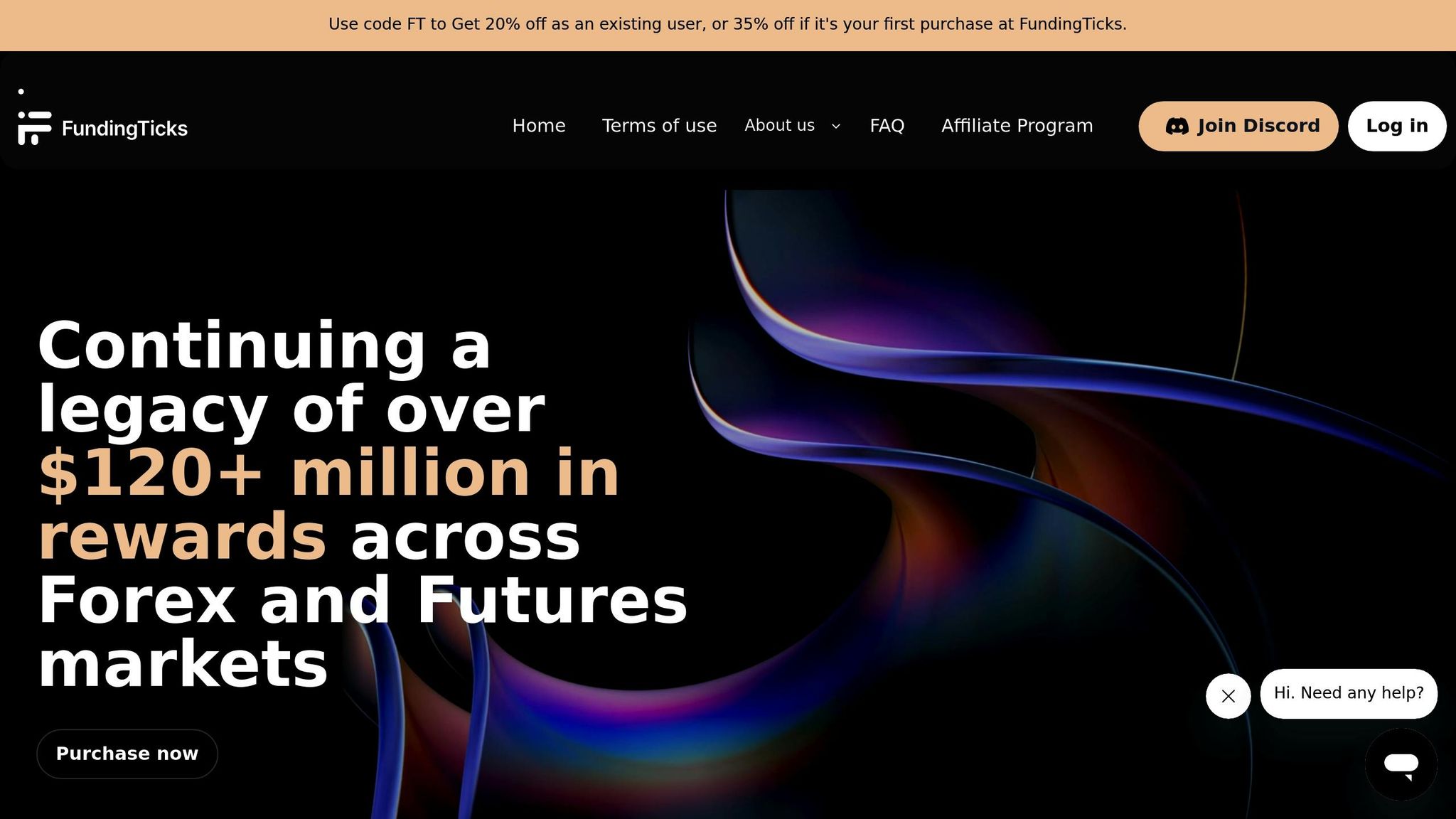
FundingTicks takes a cautious approach to news event trading, adhering to industry-standard practices to manage risks associated with extreme market volatility during major economic announcements. These policies are designed to protect both traders and the firm, ensuring account stability during high-risk periods. You can explore more about their offerings and policies here.
Blackout Windows
To manage volatility, FundingTicks enforces a four-minute blackout window around high-impact economic events – two minutes before and two minutes after the scheduled release. This applies to key announcements like the Non-Farm Payroll (NFP), Consumer Price Index (CPI), and Federal Open Market Committee (FOMC) updates. It may also extend to specific market events, such as crude oil inventory reports or Treasury auctions, depending on the instruments being traded. These periods often see slippage increase dramatically, sometimes up to 10×, leading to stop-loss orders being triggered much farther from their intended levels.
Allowed Account Types
News event trading restrictions apply to both evaluation and funded accounts at FundingTicks, mirroring common practices in the futures prop trading industry. Traders should consult the firm’s official terms or reach out to support to clarify how these rules affect their specific account type. Policies can vary depending on whether the account is in the challenge phase or fully funded, so it’s crucial to understand the details.
Enforcement Mechanisms
FundingTicks uses automated systems to monitor trades in real time, cross-referencing trade timestamps with widely recognized economic calendars to identify high-impact events. If a trade is executed within the blackout window, the system flags it immediately. In most cases, this results in account termination without prior warning. This automated enforcement ensures consistent application of the rules across all accounts.
Profit Limitations
While FundingTicks’ "New One Accounts" come with no payout caps or consistency requirements for regular trading, profits earned during restricted news periods are subject to strict limitations. Any gains from trades executed within the blackout window are invalidated, preventing these profits from influencing challenge objectives or payouts. For example, if a trader opens a position on E-mini S&P 500 futures one minute before a CPI release and closes it during the blackout period, the profits from that trade are disqualified. However, profits from trades opened well before the event and closed after the blackout window remain valid.
7. Lucid Trading
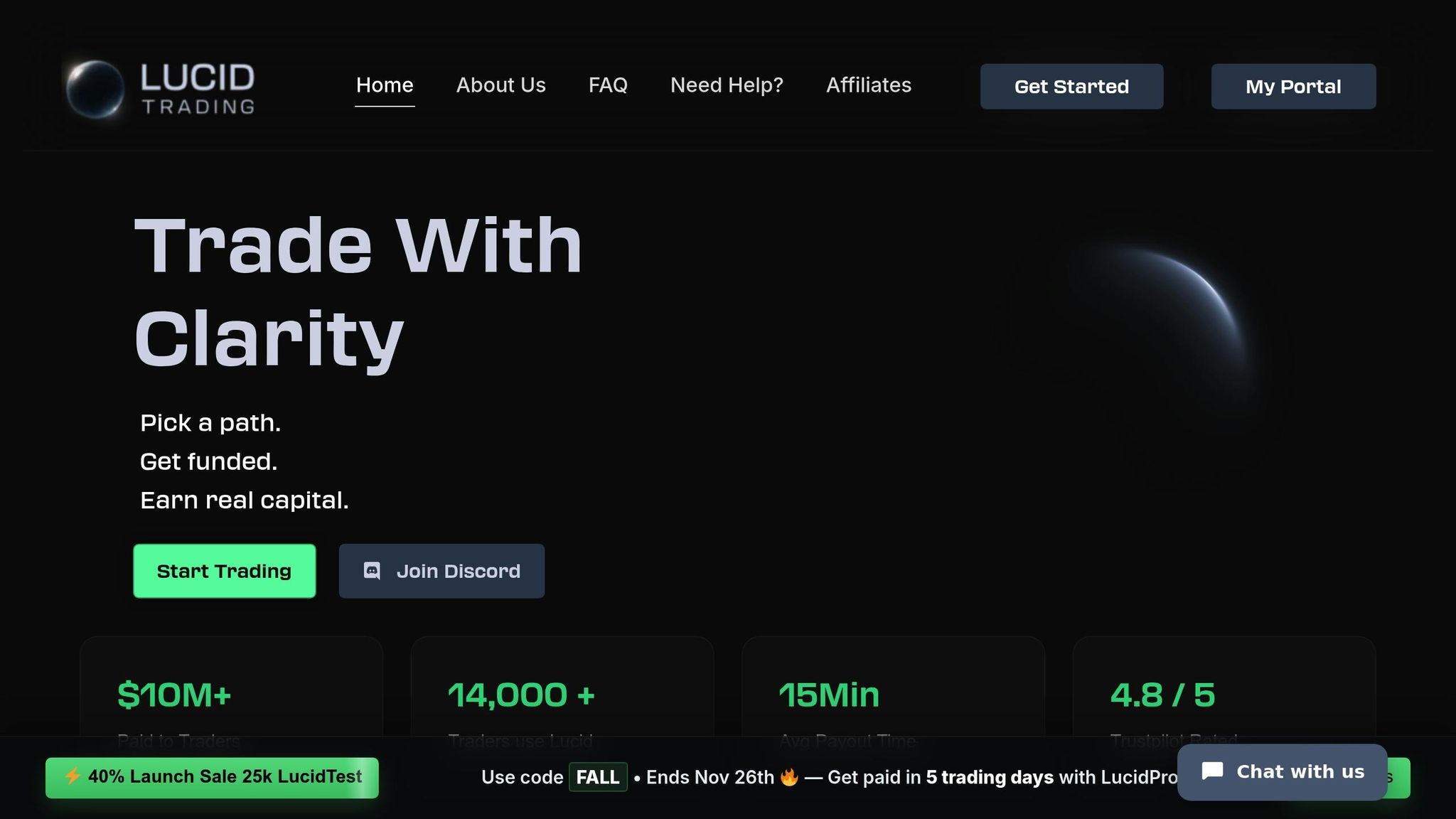
Lucid Trading has a four-minute blackout window policy around key economic events to shield both traders and the firm from the intense market volatility that often accompanies major announcements. For a closer look at their offerings and to compare them with other firms, check out DamnPropFirms.
Blackout Windows
The firm’s four-minute blackout window applies to significant economic events like Non-Farm Payrolls (NFP), Consumer Price Index (CPI), and Federal Open Market Committee (FOMC) decisions. These events are identified using well-known economic calendars, with a focus on "Tier 1" or high-impact releases that are known to cause substantial market fluctuations.
During these blackout periods, traders are required to close all open positions and cancel pending orders before the restriction begins. This is essential because news-related volatility can lead to slippage increasing up to 10 times higher than usual, creating a challenging environment for both traders and the firm. By enforcing these restrictions, Lucid Trading aims to maintain stability and mitigate risks during such unpredictable moments.
Account Types Affected
The blackout policy applies equally to both evaluation and funded accounts. Unlike some firms that impose different rules for challenge-phase accounts versus fully funded accounts, Lucid Trading maintains uniformity in its approach.
How Restrictions Are Enforced
Lucid Trading uses an automated system to enforce blackout rules. This system blocks new order placements during restricted periods and cross-references trade timestamps with economic calendar data to detect violations in real-time. Any attempt to place a new order during the blackout is automatically rejected, while traders with open positions must ensure they are closed before the restriction starts to avoid penalties.
Profit Rules During Blackouts
To promote disciplined trading, Lucid Trading invalidates any gains made during blackout periods. Profits from trades executed during these restricted times are removed from account performance metrics. This policy ensures that traders adhere to risk management principles, even if they inadvertently profit during these windows.
For instance, while gains from trades executed during the blackout are disqualified, trades opened well before the restriction and closed after it ends remain valid and are factored into account performance. This creates a clear framework for traders to operate within while navigating high-impact news events.
8. The Futures Desk

The Futures Desk takes a different approach compared to many other futures prop firms, especially when it comes to trading during news events. While most firms are upfront about their restrictions on news event trading, The Futures Desk keeps things under wraps. Their official materials highlight customizable evaluation parameters but don’t go into detail about trading windows, enforcement rules, or profit limitations tied to high-impact news events.
If you’re considering trading with The Futures Desk, it’s essential to dig into their policies directly to understand how they handle trading during volatile news periods. Knowing their stance on risk management can help you align your trading strategy accordingly.
For a broader comparison of how different firms handle news trading, check out DamnPropFirms. The Futures Desk’s unique approach to managing risk is worth factoring in when evaluating them alongside other firms.
9. TickTickTrader

TickTickTrader has carved a niche for itself in the futures prop trading world with its instant funding model and simplified account management. Thanks to its S2F+ accounts, the firm appeals to traders who want to skip lengthy evaluation periods and jump straight into trading. Like other firms in the industry, TickTickTrader maintains a balance between providing quick funding and managing risk during volatile news events. However, traders should refer to the firm’s official documentation for precise details on policies like blackout periods, enforcement, and profit guidelines. Here’s a closer look at some key aspects.
Blackout Windows
Many prop firms enforce blackout periods around major economic announcements, but TickTickTrader does not publicly share specifics about these windows. To avoid compliance issues during volatile market conditions, traders should consult the firm’s economic calendar and current rules.
Enforcement Mechanisms
TickTickTrader does not disclose whether it uses automated systems to monitor and enforce restrictions on trading during news events. Additionally, the consequences for violating these restrictions are not specified in their publicly available guidelines.
Allowed Account Types
With its instant funding model through S2F+ accounts, TickTickTrader enables traders to start trading without the need for a traditional evaluation phase. However, it is unclear whether different account types come with unique guidelines for trading during news events.
Profit Guidelines
The firm does not publicly outline specific profit restrictions tied to news events. Traders should review the latest updates to ensure they understand any potential adjustments.
For traders seeking detailed reviews and verified insights into prop firm policies, including approaches to news event trading, platforms like DamnPropFirms can be a helpful resource.
10. Topstep

Topstep is a well-known futures prop firm recognized for its strict evaluations and commitment to managing risk. One of its standout policies is its strict approach to news trading, designed to navigate the challenges of extreme market volatility.
Blackout Windows
Topstep enforces a tight four-minute blackout period around major economic announcements like NFP, CPI, FOMC, and GDP reports. This means traders must close their positions two minutes before these events and can only reopen them two minutes after they’re over. This policy isn’t unusual – studies show about 89% of prop firms restrict or ban news trading during high-impact events. By laying out clear rules, Topstep ensures traders are well aware of its expectations.
Enforcement Mechanisms
Topstep uses automated systems to monitor trader activity during these blackout periods. These systems check trade timestamps against scheduled news events. If a trader violates the rules, the consequences are immediate: termination of their account and forfeiture of any profits earned. This strict, no-exceptions policy highlights the firm’s focus on maintaining disciplined risk management.
Allowed Account Types
The news trading restrictions apply equally to both evaluation and funded accounts. This consistent enforcement ensures that all traders, regardless of their account type, operate under the same risk management framework.
Topstep’s rigorous approach to news-driven volatility reflects its dedication to protecting both traders and the firm from unnecessary risks. For those looking to compare prop firm policies or learn more about navigating news trading restrictions, platforms like DamnPropFirms provide helpful tools and reviews.
Advantages and Disadvantages
This section takes a closer look at the overall pros and cons of news event trading restrictions, building on the individual firm policies discussed earlier. These restrictions come with clear trade-offs for both proprietary trading firms and traders. Below, we break down these trade-offs through firm comparisons and real-world examples.
Benefits for Risk Management
One of the biggest upsides of news trading restrictions is improved risk management. High-impact news events – occurring roughly 15–20 times per month – can move markets by 50–200 pips. Such volatility can quickly impact trading accounts, making these restrictions a protective measure. They help safeguard traders from sudden losses and prevent exploitation of the system through tactics like latency arbitrage and straddle strategies during volatile periods.
The Cost of Missed Opportunities
While these rules protect accounts, they also limit the profit potential for skilled traders. Experienced news traders, who can capture 60–80% of significant market moves, are often the most affected. Some firms enforce profit caps on trades during news events, which can significantly reduce earnings.
Strategy Limitations and Frustrations
For traders who rely on scalping or event-driven strategies, these restrictions can be a major roadblock. Those who have fine-tuned their skills around economic announcements may find it challenging to fully utilize their expertise. Adding to the frustration is the inconsistency between evaluation and funded account phases, forcing traders to adjust their strategies when the rules change.
Comparative Analysis of Firm Approaches
| Firm | Blackout Window | Enforcement | Profit Limitation | Key Advantage | Main Disadvantage |
|---|---|---|---|---|---|
| Take Profit Trader | 1 minute (funded) | Automated termination | None during evaluation | Clear rules during evaluation | Inconsistent rules between phases |
| Apex Trader Funding | 2–4 minutes | Profit monitoring | Capped at 30% of daily profits | Some news trading allowed | Significant profit cap on news trades |
| FundedNext Futures | 5 minutes | Profit split adjustment | Traders keep only 40% of profits from trades within the window | Allows participation in news events | Longer blackout window limits profit potential |
Real-World Impact on Trading Results
The above comparisons highlight how these restrictions directly impact trading outcomes. Missing a blackout window can lead to lost profits or, in some cases, account suspension.
Finding the Right Balance
Some firms aim to strike a middle ground between managing risk and offering trading opportunities. For instance, FundedNext Futures allows traders to participate in news trading but reduces the profit split to 40% for trades made within five minutes of major news events. This approach lets traders take advantage of market volatility while minimizing the firm’s risk.
For a deeper dive into news trading policies, visit DamnPropFirms. Choosing a firm that aligns with your trading style requires balancing risk management with trading flexibility.
Conclusion
In the world of futures prop trading, news event trading restrictions have become the norm, with nearly 89% of firms implementing some form of limitation. These rules stem from valid concerns about managing risk and addressing technological constraints. They highlight the need for traders to weigh the financial impacts and adjust their strategies accordingly.
Each firm approaches these restrictions differently. Some enforce profit caps on news-related trades, others impose complete trading blackouts during major events, and a few take a balanced approach by reducing profit splits for trades executed shortly after key news releases.
For traders, the stakes are considerable. High-impact news events, which occur around 15–20 times a month, can lead to market moves of 50–200 pips. For a $100,000 account, this translates to potential monthly gains of $8,000–$15,000. These restrictions, however, can significantly affect income for those relying on event-driven strategies. By understanding and adapting to these policies, traders can better align their methods with firm-specific rules.
To navigate this landscape effectively, traders should carefully review each firm’s policies, use an economic calendar to stay ahead of key announcements, and steer clear of prohibited practices like latency arbitrage. For those who rely heavily on news-driven strategies, partnering with firms that offer transparent and flexible rules is essential.
Ultimately, success in prop trading hinges on adapting to firm-specific regulations while maintaining rigorous risk management. Understanding these restrictions from the outset can help traders avoid costly mistakes and choose firms that align with their trading style and profit goals.
For a detailed comparison of news trading policies, check out DamnPropFirms. This resource provides in-depth reviews of top firms, including Apex Trader Funding, Take Profit Trader, FundedNext Futures, Alpha Futures, Tradeify, FundingTicks, Lucid Trading, The Futures Desk, TickTickTrader, and Topstep.
FAQs
Why do prop firms restrict trading during news events?
Prop firms commonly limit trading during news events to safeguard against the unpredictability of extreme market swings. Events like economic data releases or geopolitical developments can trigger sharp and erratic price changes, making risk management a challenge. For traders, especially those using leverage, these sudden moves can result in substantial losses.
On top of that, high-impact news often reduces market liquidity. This can lead to wider spreads and increased slippage, making it tough to execute trades at intended prices. For both traders and the firms backing them, this environment heightens the risk. By setting restrictions during these periods, prop firms aim to shield their capital and maintain a more controlled trading environment for everyone involved.
Why do prop firms restrict trading during major news events, and what happens if traders violate these rules?
Prop firms often impose restrictions on trading during high-impact news events to manage risk and safeguard their funds. Events like Federal Reserve announcements or major economic reports can trigger intense market volatility, leading to unpredictable price swings and slippage. By restricting trading during these periods, firms aim to minimize the potential for substantial losses caused by sudden market movements.
Traders who break these rules may face serious consequences, such as account suspension, loss of profits, or even termination of their funded account. To avoid these penalties, it’s essential to thoroughly understand a firm’s policies regarding news event trading and adhere to their guidelines. Compliance is key to maintaining your trading privileges.
Why do some prop firms allow news trading during evaluations but restrict it for funded accounts?
Prop firms often permit news trading during the evaluation phase as a way to gauge a trader’s ability to handle risk in volatile markets. However, once traders secure a funded account, the rules often tighten. This shift is designed to protect the firm’s capital, as news events can trigger unpredictable price swings, increasing the likelihood of slippage, significant losses, or even breaching account limits.
By limiting news trading on funded accounts, firms can better manage their exposure to sudden and uncontrollable market movements. This strategy not only protects the firm’s capital but also helps ensure a stable trading environment for the trader over time.

